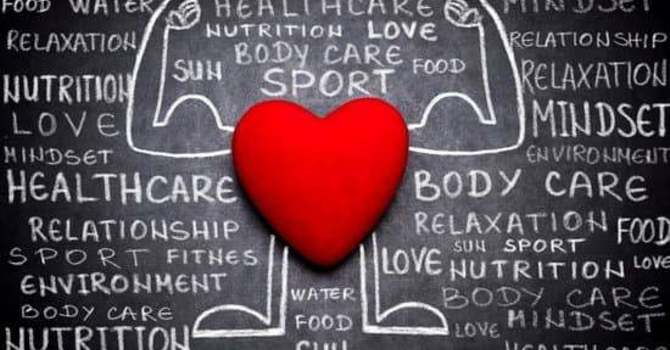
As a dietitian, I often encounter clients who struggle with their relationship to food. While many individuals may not have a clinical eating disorder, they might still experience patterns of disordered eating. It's important to recognize the distinction between eating disorders and disordered eating because they require different approaches to treatment and support. Understanding this difference can help you or a loved one seek the appropriate care when it comes to food and body image concerns.
What Are Eating Disorders?
Eating disorders are severe, life-threatening mental health conditions characterized by persistent disturbances in eating behaviors and related thoughts and emotions. The most common eating disorders include:
-
Anorexia Nervosa: Characterized by extreme restriction of food intake, an intense fear of gaining weight, and a distorted body image.
-
Bulimia Nervosa: Involves episodes of binge eating followed by compensatory behaviors like purging (vomiting, excessive exercise, or the use of laxatives).
-
Binge Eating Disorder: Defined by recurrent episodes of binge eating without the use of compensatory behaviors (e.g., purging).
-
Other Specified Feeding or Eating Disorder (OSFED): This category includes eating disorders that don't fit the criteria for the above disorders but still cause significant distress and impairment.
Eating disorders are often associated with emotional and psychological issues such as low self-esteem, perfectionism, anxiety, and trauma. They can also lead to serious physical complications, including nutritional deficiencies, organ damage, and in some cases, death. Treatment for eating disorders often involves a multidisciplinary approach, including therapy (such as cognitive-behavioral therapy), medical care, and nutrition counseling.
What Is Disordered Eating?
Disordered eating, on the other hand, refers to irregular eating behaviors that may not meet the criteria for a full-blown eating disorder but still reflect unhealthy or problematic patterns. These behaviors could include:
-
Chronic dieting or restrictive eating
-
Skipping meals regularly
-
Overeating or binge eating, especially in response to emotions, stress, or social pressure
-
Using food to cope with feelings of anxiety, guilt, or depression
-
Having a preoccupation with food, weight, or body shape without engaging in unhealthy weight control behaviors
Disordered eating is often less severe than eating disorders but can still lead to negative consequences for both mental and physical health. It can affect how individuals view themselves and their relationship to food, and may escalate into an eating disorder if left unaddressed.
Key Differences Between Eating Disorders and Disordered Eating
-
Severity and Diagnosis:
-
Eating disorders are diagnosable mental health conditions that require professional intervention.
-
Disordered eating involves patterns of unhealthy eating but does not necessarily meet the criteria for a formal diagnosis.
-
-
Impact on Health:
-
Eating disorders can result in severe physical and psychological complications, requiring immediate medical attention.
-
Disordered eating can cause distress and unhealthy relationships with food, but may not always result in life-threatening consequences.
-
-
Treatment:
-
Eating disorders often require a team of healthcare providers, including therapists, doctors, and dietitians, to manage the condition.
-
Disordered eating can often be addressed through lifestyle and dietary modifications, emotional support, and education, although some cases may require further intervention.
-
-
Frequency and Duration:
-
Eating disorders tend to be long-lasting, chronic conditions unless treated.
-
Disordered eating can fluctuate over time and may not persist if addressed early.
-
Why It’s Important to Address Both
Whether you're dealing with an eating disorder or disordered eating, it’s crucial to understand that both can significantly impact your mental and physical health. Even if you're not diagnosed with an eating disorder, engaging in disordered eating patterns can harm your relationship with food, body image, and overall well-being. Early intervention is key to promoting a healthier, more balanced approach to eating and self-care.
As a dietitian, I am here to help you navigate these challenges, offering evidence-based support to foster a healthier relationship with food and your body. If you recognize signs of disordered eating or an eating disorder in yourself or a loved one, please reach out to a healthcare professional. Early intervention can make all the difference in your recovery and long-term health.
Conclusion
While eating disorders and disordered eating share some common characteristics, they are distinct in severity and impact. If you find yourself struggling with food, body image, or eating patterns, it's important to seek professional help. As a dietitian, I can provide guidance and support to help you reclaim your health, well-being, and peace of mind. Whether you're dealing with disordered eating or an eating disorder, you don't have to go through it alone.
References:
-
American Psychiatric Association. (2013). Diagnostic and statistical manual of mental disorders (5th ed.). Arlington, VA: American Psychiatric Publishing.
-
National Eating Disorders Association. (2023). What is disordered eating? [online] Available at: www.nationaleatingdisorders.org.
-
Fairburn, C.G. (2008). Cognitive behavior therapy and eating disorders. The Guilford Press.



